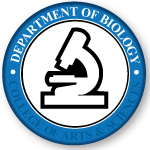Document Type
Article
Publication Date
5-2010
Publication Title
Nature
Volume
465
Issue
7296
First Page
311
Last Page
315
Abstract
Malaria caused by Plasmodium falciparum is a disease that is responsible for 880,000 deaths per year worldwide. Vaccine development has proved difficult and resistance has emerged for most antimalarial drugs. To discover new antimalarial chemotypes, we have used a phenotypic forward chemical genetic approach to assay 309,474 chemicals. Here we disclose structures and biological activity of the entire library—many of which showed potent in vitro activity against drug-resistant P. falciparum strains—and detailed profiling of 172 representative candidates. A reverse chemical genetic study identified 19 new inhibitors of 4 validated drug targets and 15 novel binders among 61 malarial proteins. Phylochemogenetic profiling in several organisms revealed similarities between Toxoplasma gondii and mammalian cell lines and dissimilarities between P. falciparum and related protozoans. One exemplar compound displayed efficacy in a murine model. Our findings provide the scientific community with new starting points for malaria drug discovery.
Recommended Citation
Guiguemde, W. Armand; Shelat, Agnang A.; Bouck, David; Duffy, Sandara; Crowther, Gregory J.; Davis, Paul H.; and Smithson, David S., "Chemical genetics of Plasmodium falciparum" (2010). Biology Faculty Publications. 68.
https://digitalcommons.unomaha.edu/biofacpub/68

